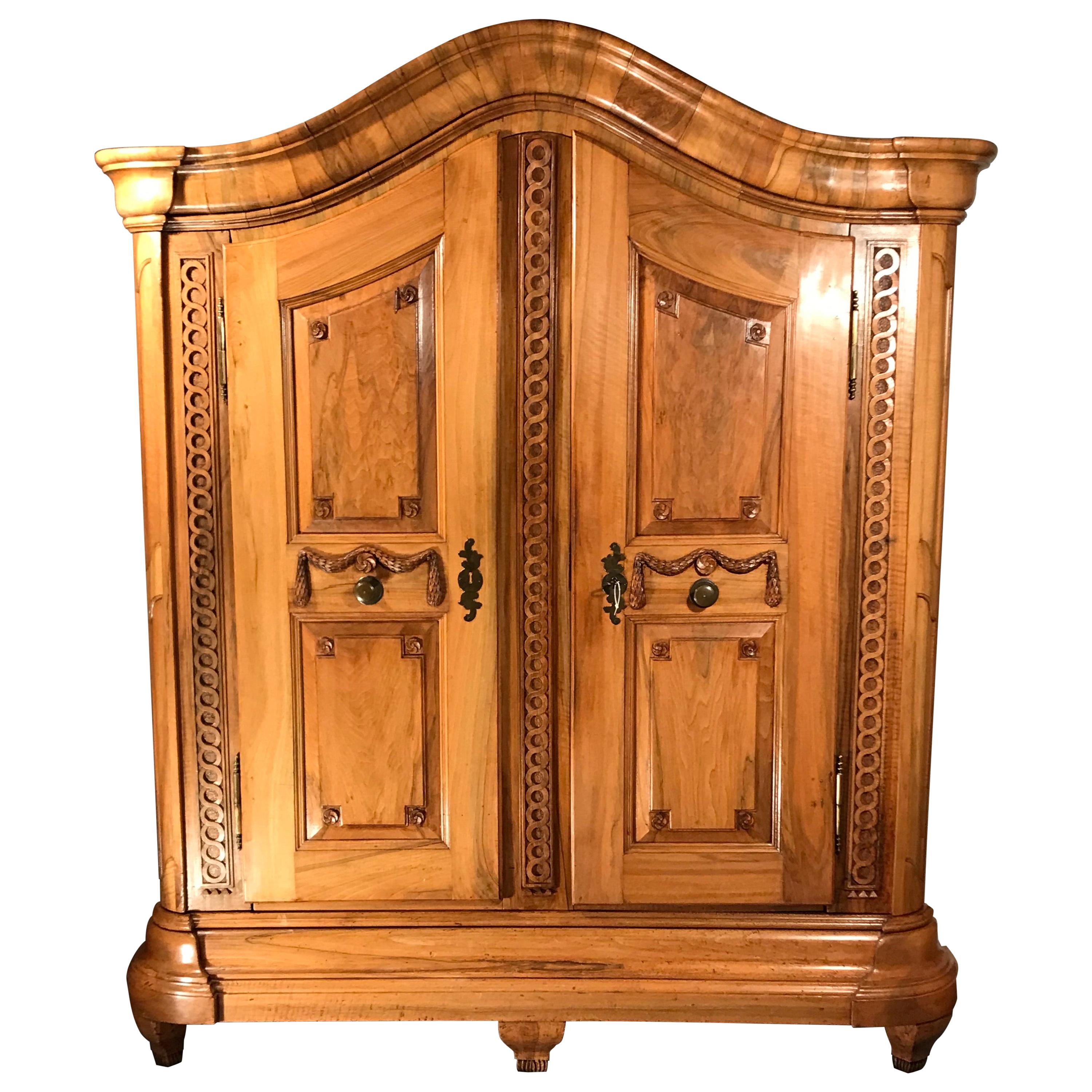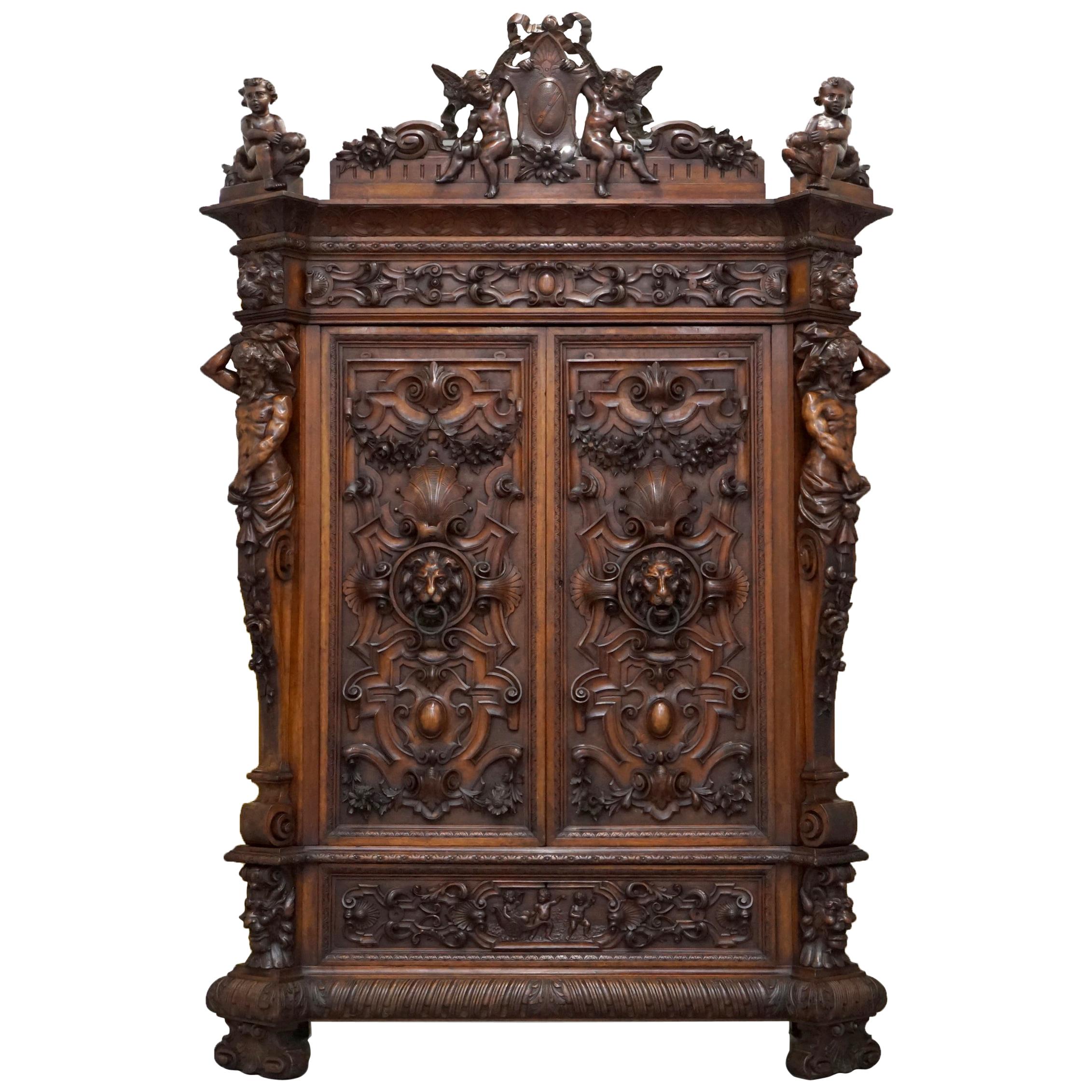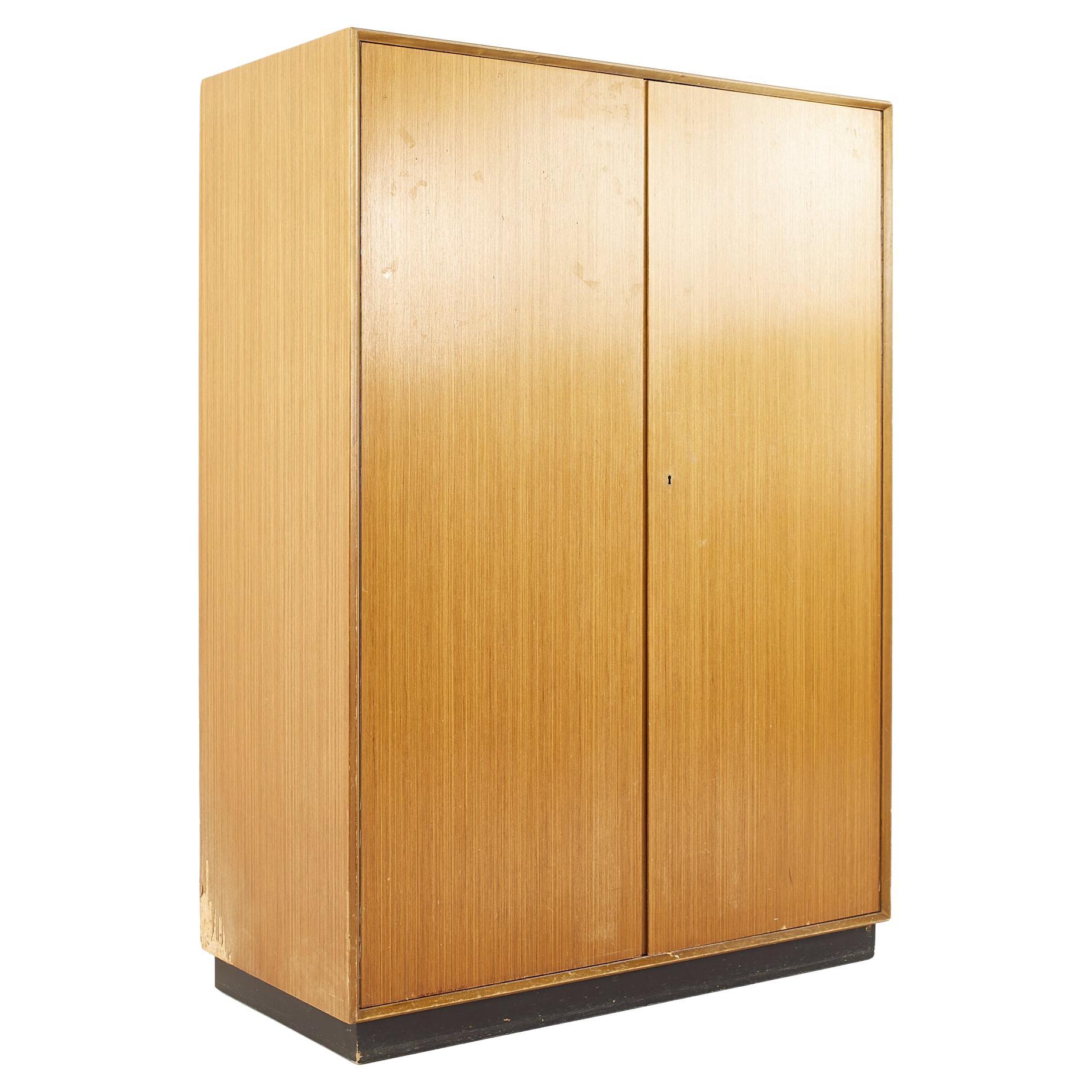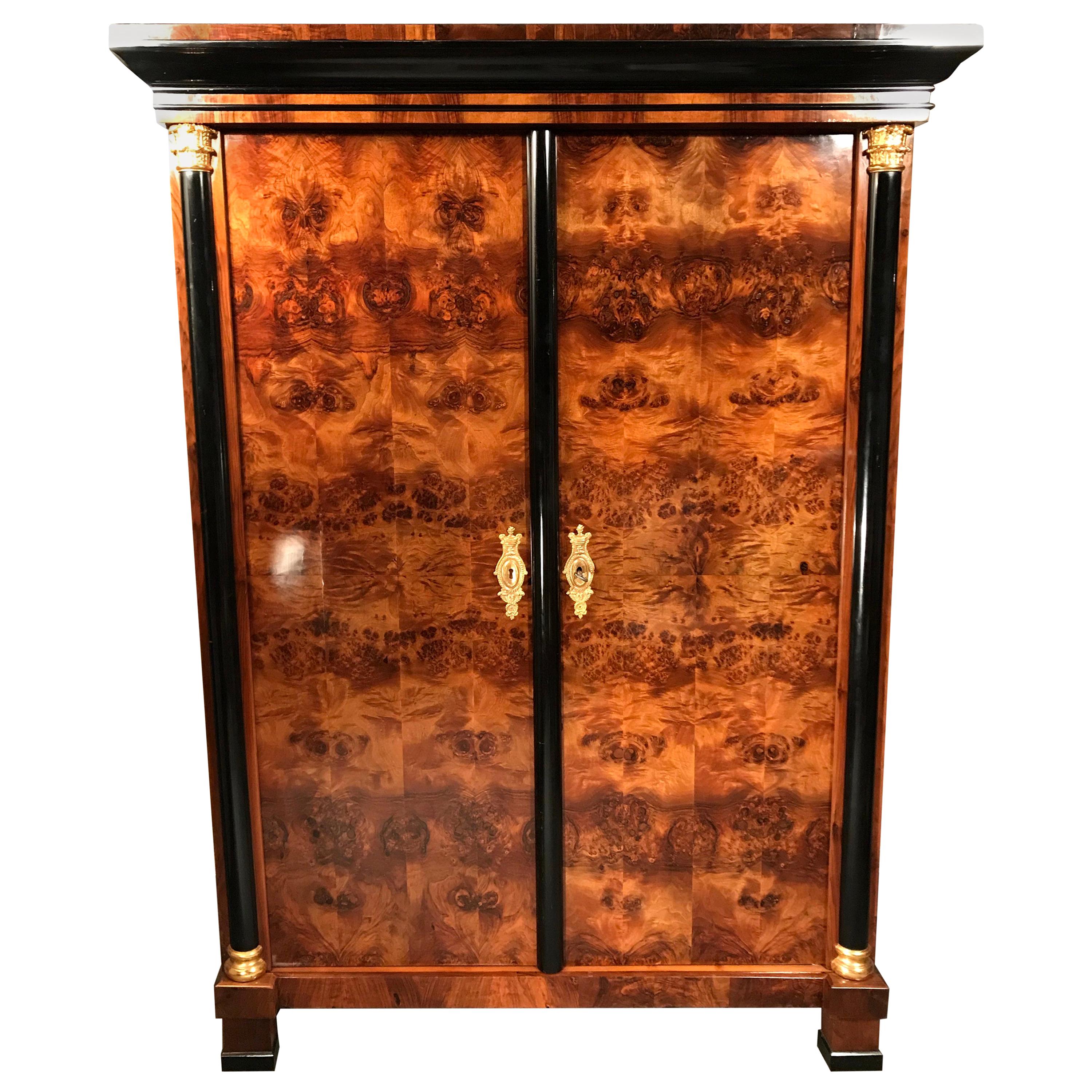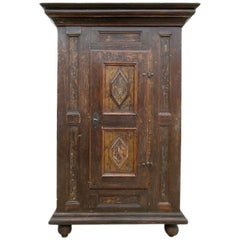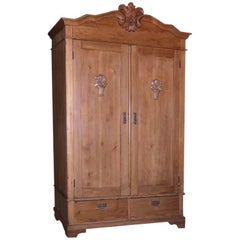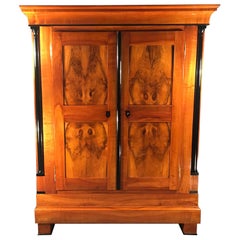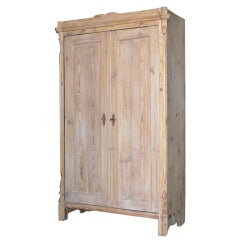
Antique German Armoire
View Similar Items
Want more images or videos?
Request additional images or videos from the seller
1 of 11
Antique German Armoire
About the Item
- Dimensions:Height: 67.5 in (171.45 cm)Width: 42.5 in (107.95 cm)Depth: 19 in (48.26 cm)
- Materials and Techniques:
- Place of Origin:
- Period:
- Date of Manufacture:ca. 1900
- Condition:Shows nice age, solid. Shows wear consistant with age.
- Seller Location:Los Angeles, CA
- Reference Number:Seller: A1021stDibs: U1205218065597
About the Seller
4.9
Platinum Seller
These expertly vetted sellers are 1stDibs' most experienced sellers and are rated highest by our customers.
Established in 1989
1stDibs seller since 2005
162 sales on 1stDibs
Typical response time: 1 hour
More From This SellerView All
- Swedish 17th Century Baroque CupboardLocated in Los Angeles, CAWell preserved cabinet with great age. We have painstakingly scraped off many layers of paint to reveal much of the original finish. You can still see the original inscription and fl...Category
Antique 18th Century and Earlier Swedish Cupboards
MaterialsWrought Iron
- Antique Armoire with Carved DetailsLocated in Los Angeles, CAArmoire or wardrobe with two drawers and nice carvings. Very well-built with dovetail joints all around. Lock and key still work. Has rod for hanging clothes but we can modify an int...Category
Antique 19th Century Russian Wardrobes and Armoires
MaterialsPine
- Baltic ArmoireLocated in Los Angeles, CABeautiful 19th century armoire with extensive carvings, turnings and decorative moldings. Has two drawers below. This piece is extremely well-made, all corners joined by dove-tail jo...Category
Antique 19th Century Latvian Wardrobes and Armoires
MaterialsBirch, Pine
$4,500 - Folk Art Painted Armoire, circa 1850Located in Los Angeles, CAFolk art painted armoire. Interior shelving has been added to accommodate computer etc. We can customize interior for any needs.Category
Antique 19th Century Russian Wardrobes and Armoires
MaterialsPine
- Louis XV Period Armoire in CherrywoodLocated in Los Angeles, CABeautiful Louis XV period armoire in cherrywood. Masterfully carved floral details in relief. Two drawers, one with original lock. Door lock is also original and functional. Great or...Category
Antique Mid-18th Century French Louis XV Wardrobes and Armoires
MaterialsCherry
- Large Louis XV Armoire in WalnutLocated in Los Angeles, CAExcellent French Louis XV period armoire built with book matched panels. This is a monumental piece!Category
Antique Mid-18th Century French Louis XV Wardrobes and Armoires
MaterialsWalnut
You May Also Like
- Biedermeier Armoire or Wardrobe, South Germany, 1820, Walnut and Cherry VeneerLocated in Belmont, MABeautiful original Biedermeier Armoire, South Germany 1820. This classic Biedermeier piece with two doors is embellished with a beautiful walnut and cherry veneer and accentuated wi...Category
Antique 1820s German Biedermeier Wardrobes and Armoires
MaterialsCherry, Walnut
- 18th Century Louis XVI Armoire Carved Walnut, South Germany, 1780Located in Belmont, MAThis original 18th century Louis XVI armoire, which was made in South Germany around 1780, stands out for its finely carved walnut details. Festoons and flowers decorate the two door...Category
Antique 1770s German Louis XVI Wardrobes and Armoires
MaterialsWalnut
- Hand-Painted ArmoireLocated in Washington, DCThis is a very nice original hand-painted Bohemian Armoire. The outside is hand-painted in a green color with hand-painted stars to the door in a cream color. We have the original ke...Category
Antique Mid-19th Century Italian Bohemian Wardrobes and Armoires
MaterialsWood, Paint
$6,225 - Antique 17th Century Dutch Hall Cupboard Kast Oak Armoire KasLocated in Basingstoke, HampshireAn impressive Dutch oak cupboard formally also as a 'Kast' or 'Kas'. Dating from the late 17th century, this cupboard would have originally been use...Category
Antique 17th Century European Cupboards
MaterialsOak
Unavailable$3,754 - Rare Moses Michelangelo Guggenheim & Pauly Cie Et Venice Antique Carved ArmoireBy Guggenheim Museum, Pauly et CieLocated in GBWe are delighted to offer for sale this very rare one of a kind Pauly CIE Et stamped hand carved walnut armoire made by the genius that was Moses Michelangelo Guggenheim 1837-1910 Where to begin, this cabinet is stamped to the rear “Fabrique De Meubles Pauly & Cie Venise. Pauly & Cie” who were a world famous glass foundry and later equally famous furniture manufacturer. Their grotto furniture has an immense following across the world. This piece was most likely retailed through them as it was made by Moses Michelangelo Guggenheim who is a fellow venetian There is one other known example of his works which is very similar, it is currently retailing for no less than £900,000 however it is accompanied by a few other pieces from a drawing room suite. The suite came from Palazzo Papadopoli, a Renaissance palace on the Grand Canal in Venice built for the Coccini family by Giovanni de Grigi around 1560. I will include some further history below on both Pauly CIE ET and Moses Michelangelo Guggenheium On to the armoire, it is clearly the most ornate tour de force of carving you will ever see, I’m thankful it has managed to survive so long without being broken up by salvagers looking to reclaim the sculptures. You can see in the carving elements of Pauly’s inspiration in the form of shells. You also have Putti’s riding dolphins and so on. We have fully treated it as there were various signs of old worm, it’s then been cleaned waxed and polished. One of the hidden hinges has been replaced, otherwise it is in near perfect condition for the age. The insides houses three wood shelves Dimensions Height 255.5cm top to bottom, without the removable top carving 211cm Width 170cm arm to arm of the chaps on the outside, 172cm at the top, 166cm at the bottom Depth 63cm top, 55cm middle, 59cm bottom Please note all measurements are taken at the widest point Moses Michelangelo Guggenheim Leading expert of decorative arts in late 19th century Venice, Michelangelo Guggenheim (1831-1910) also was one of the greatest antiquarians and a modern furniture producer in the “City of Water”. His collections stored in the Balbi Palace on the Grand Canal were an outstanding sight, that art amateurs would recommend. At the age of 20, he founds a "Stabilimento d’arti decorative e industriali" which purpose is the industrial creation of objects bearing an artistic force. The furniture that made him worldwide famous re-imagines ancient styles, freeing their aesthetic powers to serve modern imagination. Often in walnut, his pieces of furniture sent to World Fairs impress people by the finesse of their sculptures. A prized designer as well, he reorganizes princely interiors in the same spirit. His most famous work is the Palazzo Papadopoli's design about 1874, where he unfolds the vocabulary of several periods. He conceives there a richly furnished Neo-Renaissance Cabinet that relived the Italian golden age. For the exceptional result he is awarded the Gold Medal of merit for science and arts by Ludwig II of Bavaria. Pauly & Cie Venise Since its foundation (1866), Pauly & C. has stood for elegance, creativity and Venetian luxury. The ancient Roman technique known as “murrine”, which today is the symbol of Murano glass, was reproduced for the first time in its workshops and was presented to the world at the Universal Exhibition in Paris in 1878. In 150 years of business Pauly & C. has produced unique works for royal palaces, public buildings, private villas and has served an international client base that includes some of the most prominent names from the world of culture and art, figures from the world of industry and finance, politicians and nobility. Pauly & C. - C.V.M. (compagnia Venezia Murano) works are currently held in many private collections and exhibited in some of the most prestigious museums in the world. In the last years of activity, Pauly has been active with three distinct brands: • Pauly & C. CVM, the time-honoured company that produces classic objects, recreating old designs and collections and offering modern reinterpretations of them. • Pauly Glass Factory, which continues its association with artists and designers to produce artistic works with modern lines. • MVM Interior operates throughout the world with architects, interior designers and design studios for the creation of prestigious personalized projects History Compagnia di Venezia e Murano C.V.M. began as Salviati &C. in London in 1866 under the direction of Vicenza attorney Antonio Salviati and with the backing of two British men: archaeologist Austen Henry Layard and antiquarian Sir William Drake. The company was dedicated to using ancient techniques and utilized master glassblowers in its efforts to do so. It called in specialists from other fields like goldsmithing and engraving to ensure authenticity and employed artist Giuseppe Devers to teach the techniques of enamelling and heat-applied glass gilding to company artisans. Archaeologist Layard was particularly interested in the mosaic glass techniques of Roman and pre-Roman artists, and he spent years personally overseeing the work of the company's technicians and glassblowers in attempting to revive those techniques. In 1872, the company was successful, managing to replicate the type of glass commonly known as "murrina". The company was renamed Venice and Murano Glass and Mosaic Company Limited in 1872, and, in 1877, Layard purchased Salviati's interest so that Salviati could pursue other interests. The company quickly earned a reputation for quality original glass art and reproductions as well as its many mural mosaics in Great Britain and elsewhere in Europe. In 1878, the murrine produced by Compagnia di Venezia e Murano was included in its exhibit at the International Exhibition in Paris, which was the chief attraction in Italian glass. In its observations of the display, the United States Commission to the Paris exposition commented not only on "Roman murrine glass", but also particularly on the mural glass mosaics, the "perfection of which" had "engaged the earnest attention of the company." Mosaics produced by the company during the time period are still in existence in diverse areas such as Gonville and Caius...Category
Antique 19th Century Italian Victorian Wardrobes and Armoires
MaterialsWalnut
- Painted Central European ArmoireLocated in Wilson, NCThe door of this armoire has two molded panels with floral painted decoration. The steel keyhole escutcheon is original. The interior has four fixed shelves.Category
Antique 1830s European Wardrobes and Armoires
MaterialsBrass
Recently Viewed
View AllMore Ways To Browse
Walnut Armoire Inlaid
Bone Inlaid Armoire
Buster And Punch
Painted Wedding Armoire
Maple And Co Wardrobes And Armoires
Antique 3 Door Mahogany Wardrobe
Moorish Wardrobe
Antique Edwardian Armoire
Edwardian Clothes
Early Georgian Wardrobe
French 19 Century Armoire
Louis Xvi Fruitwood Armoire
Antique Primitive Wardrobe
Bedroom Wardrobe Heal
French Antique Dressers Wardrobes
French Birds Eye Maple Armoire
Thomasville Mystique
19c Walnut Armoire

